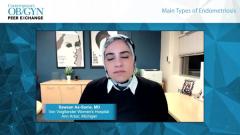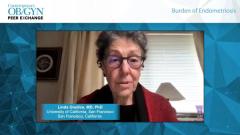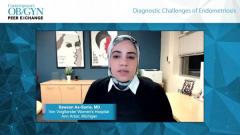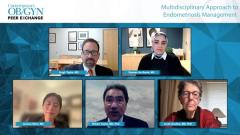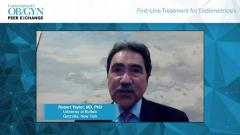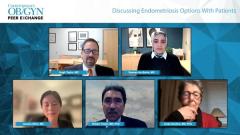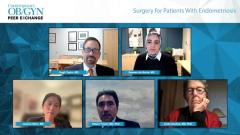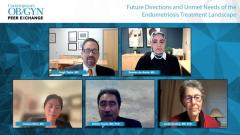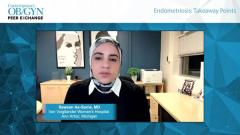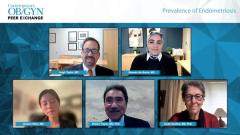
The Burden of Endometriosis
Endometriosis experts describe the potential physical, social, and psychological impact the disease may have on patients lives.
Episodes in this series

Hugh Taylor, MD: Let’s talk about the burden on a patient’s life. All these things we just talked about can be quite debilitating. Jessica, maybe you can speak to the overall impact on quality of life and the ability to perform at school or work.
Jessica Shim, MD: Unfortunately, endometriosis causes a huge burden on quality of life and the ability to engage in school and work, and it’s a huge cost burden across the United States. From my perspective, when I have patients come in with their families or caregivers, it’s draining for the patient but also emotionally exhausting and challenging for the parents and the family, who bring those children in wondering what the diagnosis, seeking help to fix and alleviate a lot of the burden that is being encountered.
Hugh Taylor, MD: Rob, I’ll turn the next question over to you. In your experience, how aware are physicians and patients of endometriosis? Is there an awareness gap?
Robert Taylor, MD, PhD: We’re getting better, and this is a nice segue from the last question because the burden of the symptoms is something we all recognize much better as clinicians than we did when I was training. This phenomenon of normalization, which many young women have experienced, is part of their experience of dysmenorrhea. That’s something we’re becoming more sensitized to and much better about counseling. So yes, as clinicians, we’re becoming more aware of this, and it’s important that primary care physicians also start to develop this sensitivity and have their antennae up for these symptoms.
Hugh Taylor, MD: The primary care physicians but also the pediatricians. And the general public. Most of my patients tell me that when they first started to complain about pelvic pain or dysmenorrhea, it was dismissed by their parents, their friends, and the initial health care providers they discussed it with. We’re getting better, but we still have a long way to go.
Linda Giudice, MD, PhD: Very much to the credit of the World Health Organization, they issued [in 2021] a fact sheet on endometriosis. It was a major effort to raise awareness globally, and I’m hoping that this will indeed accomplish its goals. Because it’s not only in the developed world but also in the developing world that patients have endometriosis and are often dismissed because of pain or cultural issues surrounding menstruation. Raising awareness is a key piece in diagnosis and for patient validation. Validating and talking with patients about their experience and listening are key to empowering our patients.
Hugh Taylor, MD: Absolutely.
Jessica Shim, MD: I want to add to Linda’s point. [We need to] raise awareness but also understand and see that endometriosis can affect a lot of people from different populations. I encounter a lot of transgender and gender-diverse patients at my care center. Even patients on testosterone therapy or patients who might not necessarily look like your young woman coming to report dysmenorrhea. Many individuals describe symptoms that weren’t further evaluated for endometriosis.
Hugh Taylor, MD: Absolutely. Let’s go back to Sawsan. What are the benefits of diagnosing endometriosis early in a timely fashion?
Sawsan As-Sanie, MD: There are so many. One of the most important is to talk about the right treatment options at the right time for that patient, depending on their priorities and where they are in their journey. Getting the right diagnosis is of tremendous benefit for validation of symptoms, for starting the right treatment options, and to validate the symptoms in the family and social structure. I want to point out, though, that not every patient that has pain has endometriosis, so we want to make sure we’re not dismissing patients who have pain and don’t have endometriosis. In the same way, that’s a little off topic, but the validation of patients with endometriosis shouldn’t mean the dismissal of pain and patients who don’t have it. But getting the right label as early as possible is certainly important.
Hugh Taylor, MD: The bottom line is that we need to listen to our patients. We need to take it seriously. We have to give them permission to talk about it and let them know we’re comfortable talking about their pain, that we’ll listen and take it seriously.
Sawsan As-Sanie, MD: Absolutely.
Hugh Taylor, MD: For me, if anybody has dysmenorrhea or cyclic pain that changes over time, they need an evaluation.
Sawsan As-Sanie, MD: Absolutely.
TRANSCRIPT EDITED FOR CLARITY
Newsletter
Get the latest clinical updates, case studies, and expert commentary in obstetric and gynecologic care. Sign up now to stay informed.

